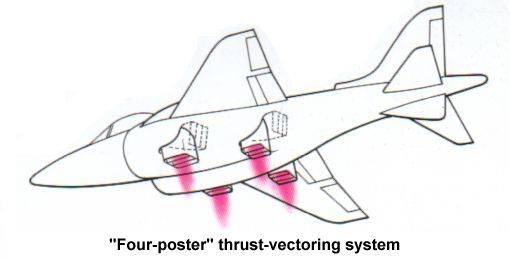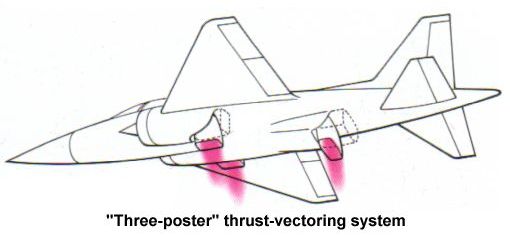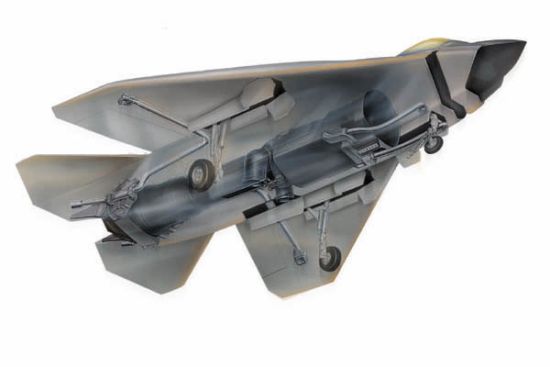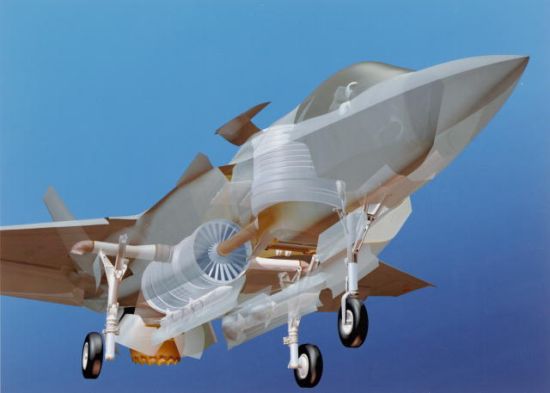|
||||||||||
|
|
||||||||||
|
||||||||||
|
|
||||||||||
The particular mechanics of the Harrier's thrust vectoring system can be better understood by studying the picture shown below.

The Harrier employs four small nozzles, located in pairs beneath the wing. These nozzles are able to rotate straight down to achieve hover, straight back for forward flight, or somewhere in between for short takeoff/landing and maneuverabilty in flight. This arrangement is sometimes referred to as the "four-poster" since each nozzle produces one "post" that lifts the aircraft while in hover.
The remarkable feature of the Harrier is that all of four these thrust-vectoring nozzles plus two small roll control jets in the wingtips are powered by just a single engine. The advantage of this approach is greater weight efficiency since the same powerplant is used in all modes of flight. The disadvantage, however, is that the engine must be located near the center of gravity and there is little flexibility in the overall layout of the aircraft because of the propulsion arrangement.
A similar V/STOL scheme is known as the three-poster, as illustrated below.

Boeing selected this arrangement for its X-32 entry in the Joint Strike Fighter competition, although the three lifting nozzles are fixed and do not rotate. All or some of the jet exhaust is instead redirected through ducts leading to the three vertical nozzles for V/STOL operations. However, the four-post and three-post approaches are obviously similar and it is therefore not surprising that the overall layout of the X-32 (short fuselage and high-mounted wings with significant anhedral) is very reminiscent of the Harrier.

On the contrary, Lockheed Martin has opted for an augmented fan arrangement in its competing X-35. Inspired by the Russian Yak-141, the X-35 utilizes two separate engines. The primary powerplant is a jet engine that provides the thrust for forward flight. In hover, this engine not only drives a separate lift fan located near the center of the aircraft, but the single nozzle on the main engine also rotates downward to provide aditional lift. As with the Harrier and X-32, the X-35 is also equipped with two small roll control nozzles in the wingtips. Although this option requires two engines and the lift fan is nothing but dead weight when in forward flight, this arrangement allows much greater flexibility in the overall layout of the aircraft. Both the Yak-141 and X-35 (shown below) more closely resemble traditional aircraft layouts since the designer is better able to tailor the aircraft for forward flight, high-speed flight, and other requirements beyond hover.

Keep in mind that we have only discussed two of the many approaches to V/STOL flight that have been attempted.
But aside from the helicopter, which has pure VTOL capability but is limited to a low maximum forward speed, the
Harrier is the only V/STOL aircraft currently in operation.
- answer by Jeff Scott, 2 September 2001
Related Topics:
Read More Articles:


|
Aircraft | Design | Ask Us | Shop | Search |

|
|
| About Us | Contact Us | Copyright © 1997- | |||
|
|
|||